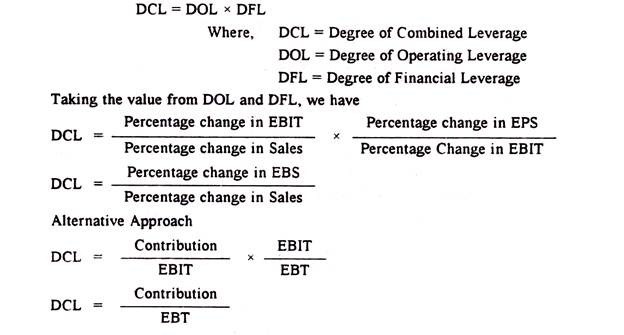What is NAV and how it is calculated
They think that when you look at NAV of funds, you get the misconception that NAV dictates the future benefit of the fund. Now, after 1 year, both the schemes generate a return of 20%. This implies that the NAV of both schemes has also appreciated by 20%. So, now, the NAV of scheme A will be Rs. 60 (20% x 50 + 50). Similarly, NAV of scheme B will spur to Rs. 120 (20% x 100 + 100). And, the total number units issued by the AMC is 5 crores.
- This, however, does not allow the contingent profit or contingent expense to be included in net assets calculation.
- It is the difference between the assets and the liabilities.
- The unitholders do not possess uniform units, therefore it is pertinent to calculate the per unit price, hence the 20,00,000 outstanding units at the end of the trading day.
Subsequently, the expenses for the day are deducted and the money available for distribution to unitholders can be calculated. Once all the variables are available, the fund managers employ the above formula and calculate the Net Asset Value of the scheme. It is impossible to calculate NAV without being able to calculate the exact outstanding units available at the end of the day.
Net Asset Value Formula
This is a common myth about NAV that prevails in the mind of most investors. And now, since we have all the three variables ‐ Assets, Expense Ratio & No. of Outstanding Units ‐ we can easily calculate the NAV at which you’ll be allotted the fund units. Generally, exit loads vary according to investment period. The step-wise exit load is called contingent deferred sales charge and it is continuously decreases over a period of time. The exit load is charged only if you redeem your units before a defined period.
In the last 20 months, over 20 Factor Funds have been launched by mutual fund houses. And one of the primary reasons for their popularity is that Factor Funds combine the best features of ac… I am new to the market and this app made me to understand the market certainly to a great extent and i will start my sip through this app. Hope this support structure is maintained in future as well. For your investment in scheme A, you’ll get 200 units (10,000/50). And, for your investment in scheme B, you’ll get 100 units.

Let’s say if you choose to invest in the IT industry instead of other industries, you will be able to generate much higher returns on your investments. Many financial analysts argue that it is wiser to look at NAV rather than looking at the individual market price of the share. Andriy Blokhin has 5+ years of professional experience in public accounting, personal investing, and as a senior auditor with Ernst & Young.
Stocks
Accordingly, although you can invest in a mutual fund on any business day of the year, you may not always get the same day’s NAV. Mutual funds with debt security investments can be valued as per their yield returns. While studying valuation, one may also come across the term “Non-Performing Asset”, which is nothing but an asset turned bad due to non-performance of its payment obligation. In such cases to make the books look good, the NPAs are written off, meaning wiped out of the profit. However, if those NPAs turn profitable in future they can be added back as well are treated as a regular asset.

Assume that a mutual fund has $100 million worth of total investments in different securities, which is calculated based on the day’s closing prices for each asset. This allows for profitable trading opportunities for active ETF traders who can spot timely opportunities. Similar to mutual funds, ETFs also calculate their NAV daily at the close of the market for reporting purposes but also calculate and disseminate intra-day NAV multiple times per minute in real-time. Mutual fundscollect money from a large number of investors, then use that money to invest in securities, such as stocks, bonds, and money market instruments. Each investor gets a specified number of shares in proportion to their invested amount. A person can invest in mutual fund on any business day of the year, but one may or may not get the same day’s NAV.
For instance, let’s say you have 30,000 rupees that you want to invest in a mutual fund. You visit ETMONEY to purchase the fund of your choice, whose current NAV is Rs. 30. So, for the amount invested by you, you’ll get 1,000 (30,000/30) units of the fund that you want to invest in. NAV, or Net Asset Value, is simply the price at which you buy and sell units of a fund.
A mutual fund calculates its NAV by determining the closing or last quoted price of all securities in its portfolio along with the total value of any additional assets the fund holds. Examples of additional assets a fund might hold include cash and liquid assets, receivables such as interest payments, and accrued income. Closed-end FundsA closed-end fund refers to a professionally managed fund whereby an investment company issues the initial public offering to raise capital. Later, these stocks are exchanged in the open market among the shareholders like other shares. Such investments provide better returns than the open-end funds.
Though we have filed complaint with police for the safety of your money we request you to not fall prey to such fraudsters. You can check about our products and services by visiting our website You can also write to us at , to know more about products and services. While a stock’s price fluctuates significantly throughout the day, a mutual fund’s price is based on a NAV calculation that is updated at the end of the business day.
By calculating the NAV, you can view holdings in your portfolio. The offers that appear in this table are from partnerships from which Investopedia receives compensation. This compensation may impact how and where listings appear. Investopedia does not include all offers available in the marketplace. The fund’s NAV represents a “per-share” value of the fund, which makes it easier to be used for valuing and transacting the fund shares. There is a mathematical formula for the calculation of NAV.
Top Fund Houses
NAV return, or net asset value return, is a performance measurement for mutual funds, ETFs, and open-end funds. You calculate NAV by dividing the net assets by the total number of outstanding mutual fund units. Premium to net asset value presents when the value of an exchange-traded investment fund is at a premium to its which nav is calculated at the end of the day daily reported accounting NAV. A closed-end fund raises capital for investment through a one-time sale of a limited number of shares, which may then be traded on the markets. This is known as the asset-based approach for valuing a company. This calculation looks at the total assets of a company minus its liabilities.

The asset section of mutual funds includes the cumulative market value of a particular fund’s investments, receivables, cash, cash equivalents and other accrued income. This market value is calculated at the end of each day, based on the closing price of the various securities included in the fund’s portfolio. These funds may include a percentage of capital in the form of liquid assets and cash as well as other items like interest payments, dividends, etc. The sum of all these assets mentioned above or their variants falls under the category of assets.
Net Asset Value Calculator
The fund manager’s task is always to maximize the total assets and minimize the liabilities. Net Assets do not necessarily mean actual profit, as it includes notional profit as well. Suppose, an investment of Rs. 100 is appreciated by 10% which is equal to Rs. 10, this Rs. 10 cannot be realized until the investment is sold. However, this appreciation does get added up into the total assets calculation. Similarly, an expense, though payable later, becomes a part of the total liabilities. This principle is called the principle of accrual, which is indigenous to accountancy.
You have been provided with the following assets and liabilities details of Mutual Fund X as of February 10, 2020. However, it is crucial to input the correct qualifying items under assets and liabilities to get an accurate net value of assets. “FundsIndia.com offers a luxury platform for online investing.”
So, when these expenses are subtracted from the aforementioned assets, we have something called the ‘Net Assets’. Further, when the Net Assets are divided by the ‘Number of Outstanding Units’, you get the NAV of the fund. The NAV of the fund will depend upon the value of the portfolio, which in turn, depends upon https://1investing.in/ the value of the securities or assets held in it. The articles and research support materials available on this site are educational and are not intended to be investment or tax advice. All such information is provided solely for convenience purposes only and all users thereof should be guided accordingly.
Let us understand Mutual Fund NAV calculation in this article. A mutual fund is an investment vehicle consisting of a portfolio of stocks, bonds, or other securities, overseen by a professional money manager. Funds can be open or closed and the pricing of each share is based on NAV. The price of each fund share is reflected as the NAVPS or per-share value. Mutual funds commonly pay out all of their income like dividends and interest earned to their shareholders. Additionally, mutual funds are also obligated to distribute the accumulated realized capital gains to the shareholders.
If both these conditions are met, then the investor will be allotted units of the scheme at the NAV of the previous day. SEBI mandates that both the application form as well the payment should be completed before the cut off time of 2pm. Therefore, it is advisable to undertake the transfer using Real-Time Gross Settlement or National Electronic Funds Transfer facility .
Leave A Comment